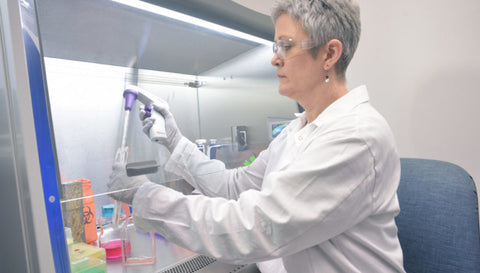Multi-Tagged Vectors

In this blog post, we explore some of the reasons why researchers might use multiple tags for the study of one protein.
Protein fusion tags make affinity chromatography possible for many proteins, particularly those for which no affinity-quality antibody is available. In addition to improving conditions for purification, tags can facilitate detection and protein interaction studies. Affixing multiple fusion tags to a single target protein makes it possible to conduct a variety of assays using the same vector.
Making proteins soluble
One major barrier to purifying some proteins, especially large or complex ones, is their insolubility. The cell conditions required for overexpression in E. coli can lead to protein misfolding and aggregation into inclusion bodies. Finding strategies for solubilizing proteins in the first place presents a welcome alternative to attempting to refold them. Solubility tags are often larger sized protein tags that assist the recombinant protein in becoming more soluble in the cell.
Different tags work through different mechanisms:
- Maltose binding protein (MBP) recruits the recombinant protein into a folding pathway via a chaperone protein.
- N-utilization substance (NusA) slows translation so that the protein has ample time to fold.
- Glutathione S-transferase (GST) protects the protein from proteolytic degradation, thus stabilizing it in a soluble form.
Not all solubility tags are created equal, and some require a secondary affinity tag for purification. NusA, Trx, and SUMO need helper affinity tags while MBP, GST, and Halo already possess affinity qualities. Either way, solubility tags are often used in conjunction with a stronger affinity tag such as His, CL7, or Strep to increase yields.
Tags for detection
Tags can also be used for detection purposes. Previously unstudied proteins can be tagged for recognition by commercial antibodies. This strategy is useful for proteins for which no specific antibody has yet been developed due to low native expression levels or unknown structure.
Detection tags can also be used to differentiate between endogenously expressed protein and the recombinant form, which can be important for gain-of-function studies.
- Tags like His and GST have antibodies to them and can serve a dual purpose for both detection and purification.
- Fluorescent proteins such as GFP are mostly used for cellular localization, tracking, and imaging.
- Myc and HA are often used in pull-down experiments to observe protein-protein interactions.
Many tags recognizable by antibodies are generally small and do not affect the properties of the protein.
Protein-protein interaction studies
Using a multi-tagged vector also allows for protein-protein interaction studies without the use of antibodies. Tandem affinity purification (TAP) is a two-part purification that allows proteins and their binding partners to be purified in two successive chromatography steps. Like with other affinity purification systems, the dual-affinity tag is fused to the target protein. TAP was originally created with the IgG binding units of Protein A and a calmodulin binding protein (CBP), but any combination of tags is possible. Choosing a combination of tags is simply contingent on the alignment between the needs and conditions of the tags and the protein of interest.
Summary
Tagging a recombinant protein with multiple tags can confer extra qualities on it that expand possibilities for research. Using a multiple-tagging strategy could be the difference between failure and success.
Many of TriAltus’ plasmids are multi-tagged. Click here to explore product offerings.
